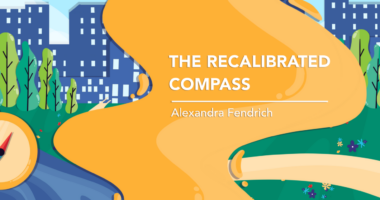My ankylosing spondylitis diagnosis brought up conflicting emotions
Finding answers resulted in both relief and fear for this columnist

“I have been diagnosed with ankylosing spondylitis.”
That simple statement comes with extremely powerful emotions that can often feel contradictory. When my family doctor revealed that the results of a recent MRI showed evidence of ankylosing spondylitis (AS), the two main emotions I felt were relief and fear. Like heads and tails, my feelings were opposites, yet two sides of the same coin.
Relief
Without a doubt, relief came first. I’d been struggling with my health for decades and finally had an answer. In addition to a constantly achy back and frequent headaches, which I attributed to a car accident in my teen years, I juggled an endless list of symptoms.
- Sacroiliac joint inflammation: check.
- Temporomandibular joint inflammation: check.
- Wrist pain: check.
- Heel pain: check.
- Severe stiffness: check.
- Irritable bowel syndrome: check.
- Costochondritis: check.
I always treated these issues independently of one another. I rarely felt cured of them, but there were periods of relief.
Eventually, a perfect storm (likely due to severe sleep deprivation and stress from caring for infant twins and a toddler) caused all my symptoms to flare simultaneously. My body became rigid, the pain became constant, and my flexibility diminished significantly. At age 33, I felt trapped in the body of someone much older.
Despite seeing countless medical professionals and takings various over-the-counter medications and NSAIDs for years, my pain persisted and progressively worsened. The future seemed long, and I couldn’t imagine living like this for decades to come.
I’d had plenty of blood tests and X-rays done over the years. Although I tested positive for the HLA-B27 variant, other tests and imaging showed nothing unusual. Finally, an MRI showed evidence of past and current inflammation.
There’s something incredibly validating about the physical evidence of invisible pain. The MRI was immediately enough for my doctor to diagnose AS. To have a medical professional acknowledge and give a name to the pain I’d felt for decades brought me immense relief.
Fear
On the flip side, fear was a close second. The internet is full of anecdotal horror stories about people living with AS, an incurable and progressive disease. I made the mistake of reading lots of these stories, thinking that being informed would be helpful. I wanted to know how to best prepare for my future, forgetting that the stress produced by this depressing research only amplified my physical pain. If life seemed long pre-diagnosis, then the future felt endless immediately post-diagnosis.
Thankfully, I have since learned that these emotions are a valid and natural part of processing a significant diagnosis. Interestingly, my feelings of relief and fear have faded as I have learned to live with AS. I’ve found that focusing on the present and managing my current symptoms is the best way to deal with AS-related pain.
Despite all of these conflicting emotions, I firmly believe that early diagnosis is crucial for overall wellness. An earlier diagnosis can result in better treatment options, less permanent damage, and increased chances of remission. If I hadn’t been diagnosed four years ago, I’d still be living in pain and wondering what was wrong with me. Instead, I’ve been able to use this time to learn to thrive, despite AS.
Thanks for reading! You can learn more about my story, browse starch-free recipes, or peruse the stories of others who successfully manage their AS with diet and lifestyle modifications on my website. Join me on Instagram and Facebook for the latest updates and recipes.
Note: Ankylosing Spondylitis News is strictly a news and information website about the disease. It does not provide medical advice, diagnosis, or treatment. This content is not intended to be a substitute for professional medical advice, diagnosis, or treatment. Always seek the advice of your physician or other qualified health provider with any questions you may have regarding a medical condition. Never disregard professional medical advice or delay in seeking it because of something you have read on this website. The opinions expressed in this column are not those of Ankylosing Spondylitis News or its parent company, Bionews, and are intended to spark discussion about issues pertaining to ankylosing spondylitis.








Leave a comment
Fill in the required fields to post. Your email address will not be published.